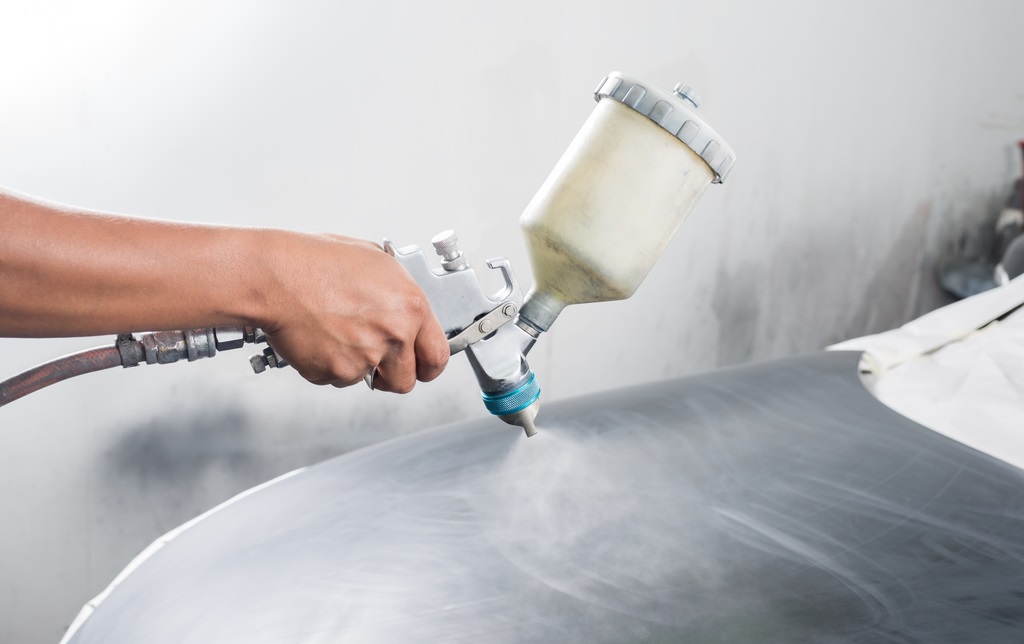Automotive Primer

For automotive sheet metal spray painting, primers are divided into epoxy primers, middle coat primers, plastic primers, and there are two kinds of middle coat primers, one is a 2K two-component middle coat primer, and the other is an air-dried middle coat primer.
1. The role of primer
Primer is the basic material on the surface of the body steel plate, and is the first layer in the body paint composite coating, its main function is to provide adhesion to the coating and prevent corrosion of the body steel plate. The primer generally does not have the ability to fill the defects on the surface of the car body, but it can make the exposed metal surface suitable for atomic ash, primer and topcoat adhesion, so the primer acts as a medium layer between the surface to be coated and the coating, so that the two are firmly combined. There are many types of primers, and appropriate primers should be selected for different substrates, and the material of the body is not only steel, but also aluminum, galvanized iron and plastic.
The correct selection of primer is very important, not only to play the anti-corrosion effect and adhesion of the primer, but also to reduce the cost of spraying and facilitate construction, as well as extend the durability of the paint film and meet the quality requirements of automotive coating. In addition, the construction process also has a great relationship with the quality of the coating, such as the thickness, uniformity, dryness of the paint film, the correct use of thinner, the construction environment (temperature, relative humidity) and the pretreatment of the coating surface, etc., which will affect the coating quality of the primer.
2. Characteristics and construction points of primer
There are many types of primers used in body paint refinishing, and the choice of primer needs to be based on factors such as different requirements for paint quality, substrate surface material and matching topcoat. Commonly used body refinish primers include phosphating primers, epoxy primers and polyurethane primers. The following is a brief introduction to the characteristics and construction points of commonly used primers.
(1) Characteristics of primer
The primer has excellent adhesion to the metal surface of the body that has been pretreated with surface treatment; The primer layer has excellent corrosion and chemical resistance; The primer layer should have the performance of passivating the metal surface and have excellent sealing to the outside world, that is, anti-"triosmosis" performance (water seepage, oxygen permeation, ion permeation); In addition to good matching for metal, primer also has the characteristics of good compatibility with putty, middle coat primer or topcoat layer; The primer should have good construction performance.
Characteristics of epoxy primer
Epoxy primer is a primer made of epoxy resin as the main film-forming substance, and there are many varieties, including high-temperature baking primer, two-component primer and one-component room temperature self-drying primer. Due to the inherent nature of body paint finishing, high-temperature baking primers are rarely used. Epoxy primer has strong adhesion, the paint film is tough and durable, and has strong adhesion to many surfaces, but the coating has poor light resistance and easy pulverization, so it is only suitable for primer.
In vehicles with high paint quality requirements or used in humid and hot environments, epoxy primers should generally be used for paint finishing. Because the car often bears strong shock, vibration and paint wear, but also subject to various changeable climatic conditions and acid, alkali and salt erosion, the body needs a good protective layer to resist. When automotive finishes require extensive refurbishment, two-component epoxy primers are the best choice. The adhesion, corrosion resistance, sealing, chemical resistance and alkali resistance of epoxy primer are very prominent, and the paint film has good flexibility, high hardness, and excellent adhesion to aluminum-magnesium alloy and light metals, steel and FRP and other substrates.
